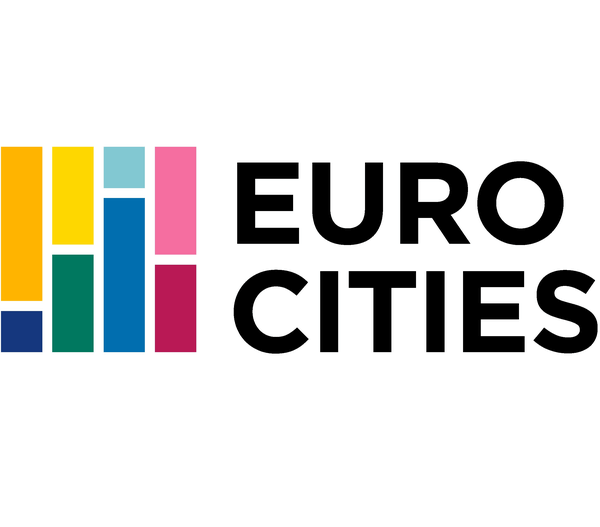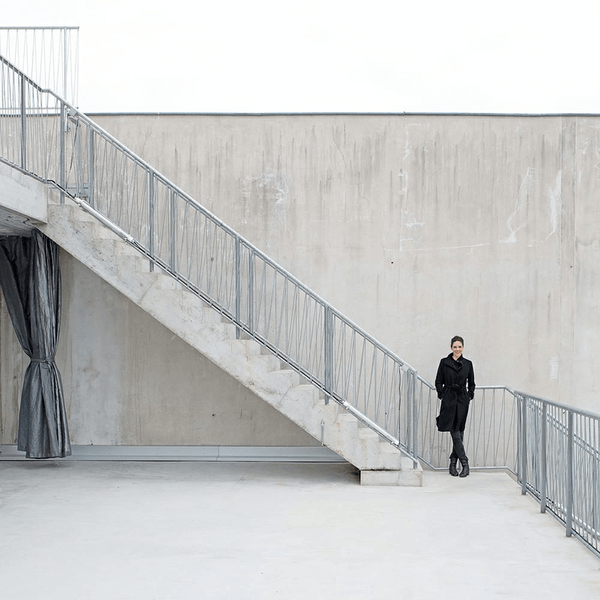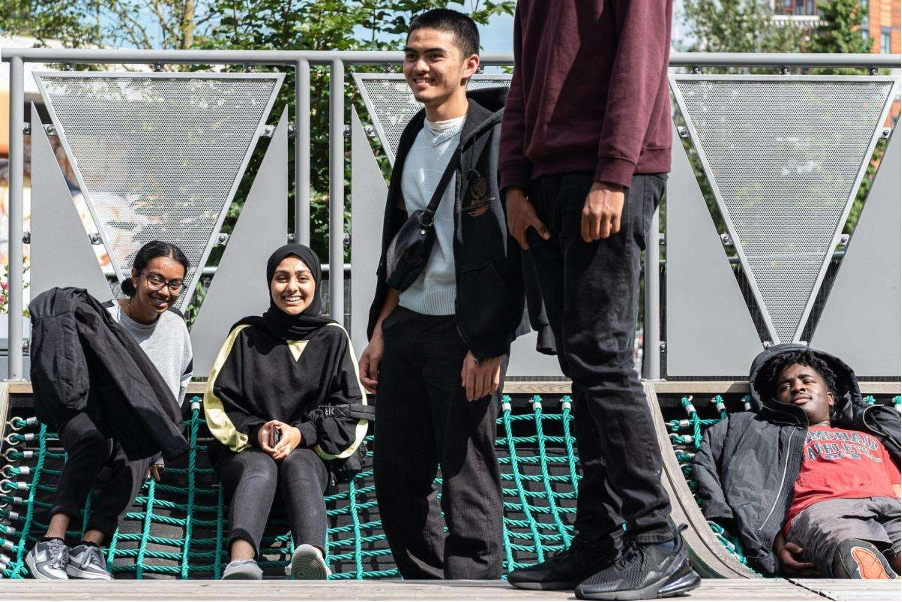 - © Catarina Heeckt
- © Catarina Heeckt - © Catarina Heeckt
- © Catarina Heeckt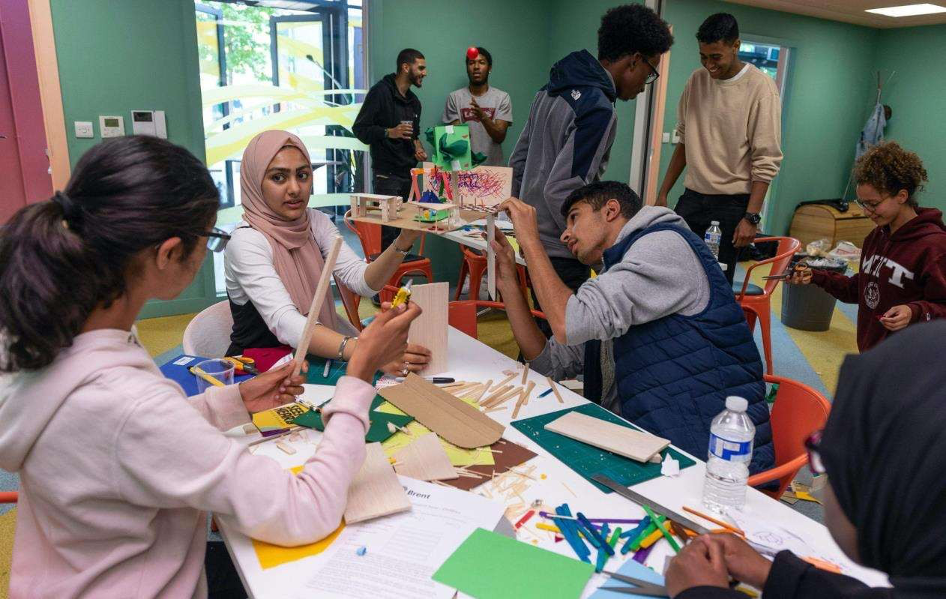 - © Catarina Heeckt
- © Catarina Heeckt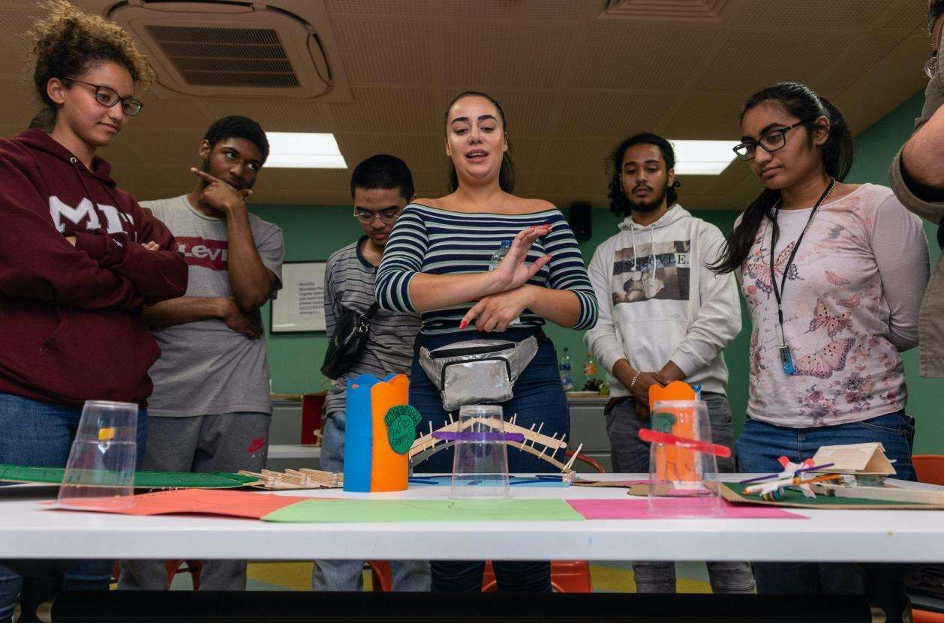 - © Catarina Heeckt
- © Catarina Heeckt
City
London
Main actors
Local Government, NGO / Philanthropy, Community / Citizen Group, Research Institutes / Universities
Project area
Neighborhood or district
Duration
2020 - 2022
Seen and Heard was a research and engagement project that aims to give young people (aged 16-24) a voice in the design and management of their local public space, taking place in the London Borough of Brent, North-West London. It sought to challenge the fact that young people are often treated more as a security risk than users or stakeholders and empower them to create positive change in their communities. At the heart of the project was the vital question: “where is my space in this big city?”.
The project was commissioned by Brent 2020, London Borough of Culture as part of an award by the Mayor of London to put culture at the heart of local communities, granted to Brent in 2020. It was delivered by the Blueprint Collective (a network of young people brought together to help shape the Brent 2020 programme), Brent Youth Parliament, the London School of Economics (LSE) and Metroland Cultures.
This multi-faceted project included: workshops in which young people could discuss issues that matter to them; the outline design of a new public space which addressed young people’s needs; and a Youth Charter, policy recommendations and petition demanding that young people have a greater role in the planning and design of public spaces.
A significant legacy project saw members of the youth collective working with LSE to translate theory into practice: opening a real space designed by and for young people within a new development in Wembley Park.
Originally published by EUROCITIES: LINK
Eurocities Awards
This project was awarded the 'Eurocities Awards' in 2023 in the following category: Young people co-creating public spaces.
The project was first conceived in 2017-18, as a result of the extensive resident consultation for Brent’s bid to become London Borough of Culture in 2020, in which young people often raised issues with public space. They talked about where they felt safe and welcome (and where they didn’t), where they liked to go, what they could do when they were there, and how this is changing in a context of rapid local change and regeneration. With Brent’s population growing by 29% in the last 20 years, the use of public space has become increasingly contested, and young people were feeling squeezed out and overlooked.
Brent’s economic and social context also informed the project’s development. It is one of the most culturally diverse boroughs in the UK: among 340,000 residents, people from Black, Asian and minority ethnic backgrounds make up 64% of the population, with 53% residents born abroad. This leads to a profound cultural richness, but also a need for public spaces where different communities can come together and make connection. Moreover, young people in Brent are overrepresented in groups that have been traditionally marginalised from shaping public space: for example, 39% experience poverty and 65% have a first language other than English.
While the project was developed before the Covid-19 pandemic, its effects exacerbated the strain on public space in the borough. Brent had the highest Covid-19 mortality rate in England in March-June 2020, so having safe green spaces to go became ever more important.
The primary aim of Seen and Heard was therefore to explore young people’s place in public space and their role in designing it. There was a particular focus on privately-owned public spaces, such as those within the Wembley Park development, which is space that is open to the public, but owned by a private entity, typically a commercial property developer. The secondary aim – in the legacy project – was to translate the design principles that young people had devised into a real physical space, whilst understanding site, regulatory and financial restrictions. A final aim was to influence policymakers and developers to take young people’s needs seriously in the future design and management of public spaces.
The objectives underpinning aims these were: to increase young people’s self-esteem and confidence; to increase young people’s awareness, knowledge and understanding of culture, design and the built environment; to build young people’s social capital, including peer and professional networks; to test a way of working that puts young people in the driving seat of decision-making; to see a demonstrable effect on the design of public space in Brent.
Firstly, 22 members of the Blueprint Collective were recruited to take part in Seen and Heard. Across summer 2019, members of the collective worked with a team of researchers from LSE Cities in a summer school-type environment at the Yellow Community Centre in Wembley Park. The eight workshops, led by architects, developers, artists and youth workers, facilitated discussion on what makes for ‘good’ public space, current discourse and practical considerations around public realm, and principles of a young people-centred design. These were highly interactive, including creative expression through model making, collage and photography.
The sessions made space for critical dialogue between young people and facilitators and did not shy away from uncomfortable but important discussions, such as young people’s concerns around racism, crime, regeneration, gentrification and the inequitable nature of urban change.
Next the young people designed a public space, learning how to think through balancing practical parameters (such as scale, materiality, and layout) with conceptual rigour. They also authored a set of policy recommendations which asked policymakers and planners to deliver more inclusive, shared and locally- responsive public space, and the ‘Yellow Charter’, a statement written by the Blueprint Collective demanding that young people have a greater role in the planning and design of public spaces. These were presented to local and regional planning bodies, including the Mayor of London’s planning, regeneration and culture teams, helping to finalise the ideas and confirming their relevance in London’s current political climate of development. The policy recommendations and Yellow Charter were published online and promoted using social media channels.
During 2020, members of the Blueprint Collective took part in an online workshop series supported by Brent 2020, London Borough of Culture, with local artists and campaigners exploring the role of culture in regeneration. This led to the development of a petition which built on the Yellow Charter, calling for the greater involvement of young people aged 15-21 in the design of public space around London. A promotional video campaign featuring voices of the Blueprint Collective helped gather 200 signatures for the petition, raising awareness of the issue in the borough and beyond.
A legacy project of Seen and Heard saw five members of the Collective continue to work with LSE Cities, as paid ‘Apprentices in City Design’. This was a way to translate the young people’s demands, learning and ideas into a tangible output to the benefit of the local community. This group undertook a 26-month period of online and in-person learning which started with participating in a curated curriculum on design, development and planning relevant to the context of Brent and Wembley Park. They were trained to apply methodologies and tools – including social science-based ethnographic survey and mapping – to understand the potential and imagine the future of new public spaces in the local area. Architects Flanagan Lawrence and the renowned artist Lois O’Hara were brought in to support the co-design of the space.
As a result, a new public space designed by and for young people, Samovar Space, was officially launched on 22 October 2022. It is a sociable, playful, open-air space which enables calm and connection, rich with brightly- coloured, comfortable and flexible outdoor seating and shelter. Situated just 300 metres from the world-famous Wembley Stadium, it is notably a more community and youth-focused space among the busy leisure and retail park in its surrounds. Samovar Space takes its name from a large, communal kettle popularly used to brew tea in Eastern Europe and Western Asia. Associated more with family events and community gatherings than cafes or restaurants, it epitomises the welcoming and non-commercial spirit that the young people wanted their proposal to embrace.
The project was funded by a mixed model, via grant funding from the Mayor of London as part of the London Borough of Culture award; public funding from Brent Council; and sponsorship from Quintain.
LSE Cities were commissioned at a cost of EUR 34,900, which included paying for internal and external facilitators. Additionally, significant investment was given on an in-kind basis in the form of staff time from Brent Council, Metroland Cultures, LSE and Greater London Authority, plus in-kind support in the form of staff time and access to a plot of land from Quintain.
Seen and Heard was conceived and commissioned by 2020, Brent London Borough of Culture, run out of Brent Council and latterly Metroland Cultures, a new independent trust set up by the council to deliver the legacy of London Borough of Culture.
Seen and Heard was highly collaborative in nature. It was initiated by members of the Blueprint Collective, a network of young people brought together to help shape the Brent 2020, London Borough of Culture programme, alongside members of the Brent Youth Parliament and other young people locally who came to the project through open recruitment.
Researchers from LSE Cities were responsible for shaping the sessions (while ensuring that they were responsive to the needs and ideas of the young people) and guiding the group through design, policy and research processes as part of their journey. They brought significant expertise of navigating the world of public realm design as well as co-designing with young people.
The developer Quintain was an important partner. Quintain is responsible for the regeneration of the Wembley Park development, and was a Principal Partner of Brent 2020, London Borough of Culture. Quintain sponsored the project, facilitated and attended sessions, and offered the group a plot of land to put their recommendations into practice. This was critical in terms of applying young people’s ideas in a tangible, ‘real world’ context.
Support was brought in from independent practitioners, architects from DSDHA and Flanagan Lawrence, and the Mayor of London’s team, ensuring a wide perspective of voices and insights.
Monitoring data captured by an independent evaluator demonstrates the quality and impact of the project on the young people. A sample of 16 (of the 22) Seen and Heard participants responded to a survey in which 100% of respondents said the project ‘made them happier, improved their self-esteem and they gained new skills’. Additionally, 100% of respondents said the project raised their awareness and knowledge of the cultural sector and that they would engage in more creative activities in the future.
Case studies of the Blueprint Collective testified to young people building their social capital, such as new friendships with people outside their usual social circle and building their professional and ‘near to peer’ networks. The Blueprint Collective, now reformed as an independent, self-organising group known as Blueprint, continues to raise the status and value of the younger generation’s needs and ideas to key stakeholders within Brent and further afield.
Meanwhile, we know that practice is being influenced by the project. In an interview with the independent evaluator, the Head of Masterplanning and Design at Quintain testified to how he refined his skills and approach in masterplanning space through his experience of working with young people on Seen and Heard, in which he encountered new and diverse perspectives.
The opening of Samovar Space demonstrated that designing public spaces with and for young people is not only possible but can deliver high-quality and inclusive outcomes. At its opening, the young people were excited to see that their aim to create a space for all local community members to 'just be' had materialised: as they looked around and observed young mothers sitting with their kids, a single young woman reading with a coffee, and group of teenaged boys chatting in the shade.
Delivery of the Seen and Heard workshops, Charter and policy recommendations with 22 young people was throughout 2019. The online workshops and petition took place in 2020. The legacy project with five Apprentices was from September 2020 to October 2022. The project is now complete, though with significant legacy.
Samovar Space is in daily public usage. It sees a regular stream of visitors and is especially enjoyed by children and young people. It also plays host to community events including choir concerts and a festive light installation.
In terms of longer-term sustainability, the process of working with young people in this way is being carried forward by Quintain to three other spaces across the Wembley Park development.
The project received positive media coverage from both local and national press, including articles in sector magazines Icon Magazine, Build To Rent News and Mastering Public Space; an interview with Zane, one of the young people, on BBC Radio London; and a feature episode of VENT podcast, an award-winning collaboration between the Blueprint Collective and VICE magazine.
Facilitators from LSE Cities noted that the project challenged them into ‘unlearning’. Recognising that young people’s attitudes to aesthetics, to the socio-political limits of privatised public space and to what is desirous in welcoming spaces, were often far removed from spatial design disciplinary norms, the researchers felt this gave crucial insight into different notions of ‘spaces of belonging’ and challenging their academically learned knowledge.
A key challenge was reconciling participants as individuals yet part of a collective whole, since young people can have contradicting aims and varied and gendered needs. This took careful listening and facilitation, ensuring each young person’s specific concerns were heard and valued, while building a group sensibility. There was space for critical debate both with and among young people which helped recognise difference while reaching consensus on the designs, demands and policy recommendations.
There were frequently emotionally intensive discussions, with subjects psychologically or geographically close to home such as racism, gentrification and crime. It was important for facilitators to be empathetic and responsive to these conversations, enabling young people to lead and define the discourse. For example, during the third workshop – envisioned as a walk around the Wembley Park with the developers to explore the practical parameters of public space design – the young people initiated a critical and passionate dialogue around inequitable regeneration locally. This led to a swift rethink of the next session, to openly explore the histories and realities of development and displacement in London and the impacts on marginalised communities.
A further challenge of the project was sustaining young people’s engagement over a long period of time. Young people have a number of commitments and pressures, exacerbated during the Covid-19 pandemic. The 22 participants in the initial project were not paid for their time (though all travel and food was paid for). To address this, facilitators were careful to establish sensitive time constraints on participants’ contributions, and to offer a variety of valuable development opportunities including training, further workshop opportunities, meaningful interaction with facilitators and invited experts, and exposure to upskilling opportunities outside of Seen and Heard. In the legacy project, funding and structures allowed for paying the five young people at standard university early researcher rates, enabling their contributions to be fully remunerated.
Seen and Heard highlighted the vital role that young people can and should play in designing public space. It was a way to put young ‘non-professionals’ in the driving seat of urban design, prioritising the tacit, experiential knowledge of young people in understanding their own needs and the needs of their local community. It gave them the tools and platforms to vocalise these needs to more typical decision-makers – policymakers, developers and researchers – and make demands around a built environment which speaks to them. It drew on a dynamic combination on creative, discursive and experiential learning, which had a clear impact on both participants and facilitators.
Through the opening of Samovar Space and the adoption of some of the recommendations in the London-wide planning charter (see below), the project has seen tangible benefit in Brent and beyond and sets out a long- term pathway for youth-centred public spatial design.
Moreover, the work has influenced London’s public spaces beyond the borough of Brent. The Mayor of London’s new Public London Charter specifically references Seen and Heard as an exemplary way of involving young people in thinking about the design of public space, and includes some of its recommendations. This document, adopted in February 2022, sets out the rights and responsibilities for the users, owners and managers of new public spaces, and is used by planning authorities assessing planning applications for proposed public space. This means that new developments must consider young people’s needs and consult meaningfully with locals in the design and delivery of new public space.
Finally, this innovative youth-centred participatory model is being carried forward into future work of LSE Cities. They have established a Young Researchers-in-Residence (YRIR) programme, a series of short-term paid learning and working experiences which engage local young people in public space research, planning and design processes in five locations in and around London where significant urban changes are taking place. This is set to further develop a methodology for working with young people across higher education and the built environment, and to collaboratively grow the evidence base on young people’s experiences of and desires for the public realm.
On Map
The Map will be displayed after accepting cookie policy
